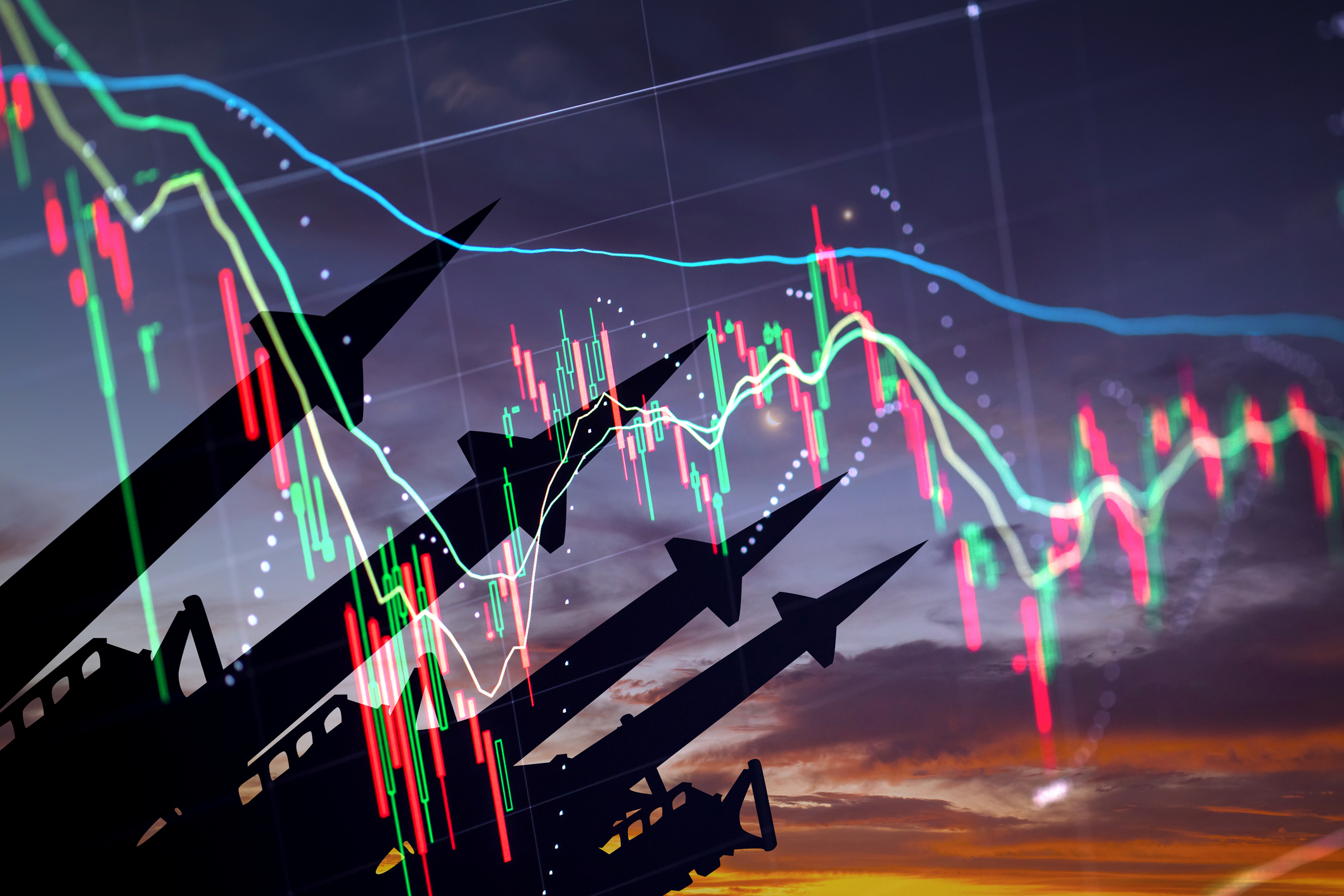Could the Covid crisis hold a silver lining for cheap value stocks?
Value investing strategies have had a dreadful six months – but the crisis could be a catalyst for them to turn around.


The coronavirus crisis has been painful for everybody, but value-focused fund managers have particular reason to feel miserable. After a decade in which growth strategies (those that look for companies with higher earnings growth) generally beat value approaches (investing in companies that look cheap on metrics such as price/earnings, price/book or dividend yield), value investors expected to be rewarded in the next bear market. Overpriced growth stocks would be crushed, cheap ones would shine and their patience would be rewarded.
To say that this has not happened is an understatement. The gulf between value and growth this year is staggering. Using indices compiled by MSCI, growth stocks beat value ones in America by 28 percentage points in the six months to the end of June. In Europe, Japan and Asia ex Japan, the gap was around 15-17 percentage points.
The vanishing value premium
Results over ten years look worse than before. Even in Asia ex Japan, where value was beating growth until 2017, value now has an annualised deficit of 4.5 percentage points per year. Perhaps even more strikingly, virtually all the cumulative outperformance of value over growth since the inception of these index series (1974 in most cases, 1996 for Asia ex Japan) has been erased.
MoneyWeek
Subscribe to MoneyWeek today and get your first six magazine issues absolutely FREE

Sign up to Money Morning
Don't miss the latest investment and personal finances news, market analysis, plus money-saving tips with our free twice-daily newsletter
Don't miss the latest investment and personal finances news, market analysis, plus money-saving tips with our free twice-daily newsletter
This will spark another round of headlines on the lines of “Is value investing dead?”. But it shouldn’t be much of a surprise. The idea that value should beat growth in a bear market is based on events like the dotcom crash, which involve a bursting bubble in growth stocks. However, value stocks on average tend to be riskier (eg, more cyclical, indebted or distressed). That’s the rational reason why they should deliver higher returns in the first place – to compensate investors for the increased risks. So in crashes that involve an economic shock, you’d expect them to do worse, because their survival may be called into question.
Data from Research Affiliates (see below) supports this: out of four shock-driven US bear markets in the last 50 years, value lagged growth in three (it beat growth in both valuation-driven ones). In five out of six cases, value then beat growth over the next two years.
The Covid-19 crisis is a shock like no other, so the huge hit to value is rational. History suggests that this should now bring better returns. That said, there are structural concerns around many stocks (such as some retailers), so history should not be trusted blindly. But solid value sectors such as large-cap energy look so unloved that exchange-traded funds dedicated to these (eg, SPDR MSCI World Energy ETF (LSE: WNRG)) seem a compelling way to back a recovery.
Guru watch
Rob Arnott, founder, Research Affiliates
Markets are “skating on a knife edge”, says Rob Arnott, the smart-beta pioneer whose firm advises on around $145bn in assets. Stocks could still head higher, driven by US retail traders speculating with their stimulus cheques instead of spending them and the belief that “there is no alternative” to buying shares when interest rates are so low, he tells Bloomberg. But “we’re in a bubble – or at least certain names are in a bubble” and that bubble must eventually burst.
The US stockmarket is very expensive by historical standards, on a Cape ratio (see box) of 29, he tells Financial Advisor. Even if valuations remain higher than their long-term average, real returns from here might be as low as 0.5% per year over the next decade – and that’s with optimistic assumptions (“earnings and dividends hold and there are no long-term growth headwinds and a normal number of bankruptcies”).
That top-down valuation disguises a lot of variation, however. “Valuations are now stretched for growth relative to value stocks wider than [they were] at the peak of the tech bubble,” he tells Bloomberg. For example, Amazon is now trading at more than 120 times earnings. Even if the firm were to grow revenues at 20% per year for the next decade – at which point it would be bigger than the entire global retail sector – it would not justify such a high price. Meanwhile, beaten-down sectors such as energy, retail and financials look attractive; they face challenges, but these are reflected in their prices.
Get the latest financial news, insights and expert analysis from our award-winning MoneyWeek team, to help you understand what really matters when it comes to your finances.
Cris Sholto Heaton is an investment analyst and writer who has been contributing to MoneyWeek since 2006 and was managing editor of the magazine between 2016 and 2018. He is especially interested in international investing, believing many investors still focus too much on their home markets and that it pays to take advantage of all the opportunities the world offers. He often writes about Asian equities, international income and global asset allocation.
Cris began his career in financial services consultancy at PwC and Lane Clark & Peacock, before an abrupt change of direction into oil, gas and energy at Petroleum Economist and Platts and subsequently into investment research and writing. In addition to his articles for MoneyWeek, he also works with a number of asset managers, consultancies and financial information providers.
He holds the Chartered Financial Analyst designation and the Investment Management Certificate, as well as degrees in finance and mathematics. He has also studied acting, film-making and photography, and strongly suspects that an awareness of what makes a compelling story is just as important for understanding markets as any amount of qualifications.
-
 London claims victory in the Brexit wars
London claims victory in the Brexit warsOpinion JPMorgan Chase's decision to build a new headquarters in London is a huge vote of confidence and a sign that the City will remain Europe's key financial hub
-
 The reinvention of the high street – and how to invest
The reinvention of the high street – and how to investThe high street brands that can make shopping and leisure an enjoyable experience will thrive, says Maryam Cockar
-
 London claims victory in the Brexit wars
London claims victory in the Brexit warsOpinion JPMorgan Chase's decision to build a new headquarters in London is a huge vote of confidence and a sign that the City will remain Europe's key financial hub
-
 Reinventing the high street – how to invest in the retailers driving the change
Reinventing the high street – how to invest in the retailers driving the changeThe high street brands that can make shopping and leisure an enjoyable experience will thrive, says Maryam Cockar
-
 The consequences of the Autumn Budget – and what it means for the UK economy
The consequences of the Autumn Budget – and what it means for the UK economyOpinion A directionless and floundering government has ducked the hard choices at the Autumn Budget, says Simon Wilson
-
 8 of the best houses for sale with electric vehicle charging
8 of the best houses for sale with electric vehicle chargingThe best houses for sale with electric vehicle charging – from a converted World War II control tower in Scotland, to a Victorian country house in Cumbria
-
 Big Short investor Michael Burry closes hedge fund Scion Capital
Big Short investor Michael Burry closes hedge fund Scion CapitalProfile Michael Burry rightly bet against the US mortgage market before the 2008 crisis. Now he is worried about the AI boom
-
 The global defence boom has moved beyond Europe – here’s how to profit
The global defence boom has moved beyond Europe – here’s how to profitOpinion Tom Bailey, head of research for the Future of Defence Indo-Pac ex-China UCITS ETF, picks three defence stocks where he'd put his money
-
 Profit from a return to the office with Workspace
Profit from a return to the office with WorkspaceWorkspace is an unloved play on the real estate investment trust sector as demand for flexible office space rises
-
 New frontiers: the future of cybersecurity and how to invest
New frontiers: the future of cybersecurity and how to investMatthew Partridge reviews the key trends in the cybersecurity sector and how to profit
